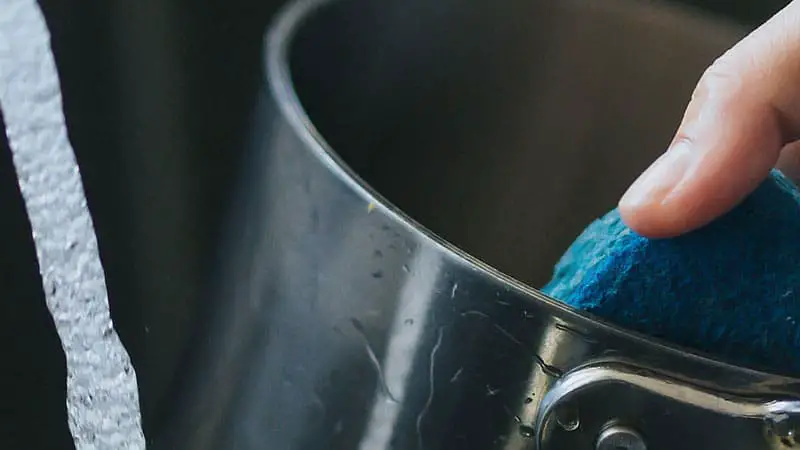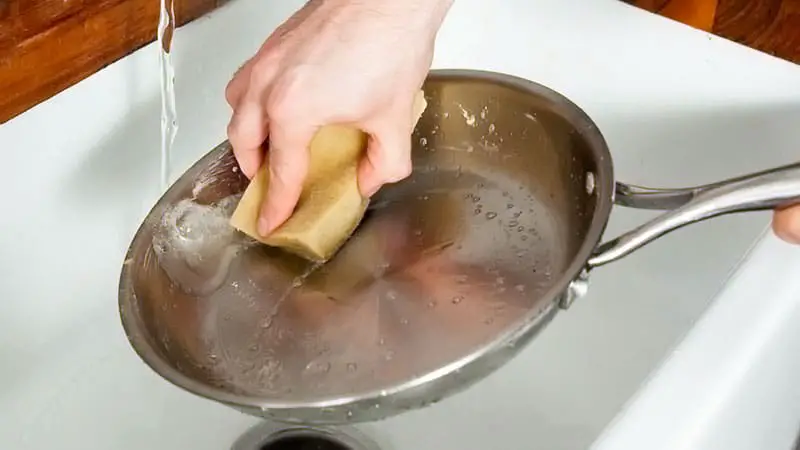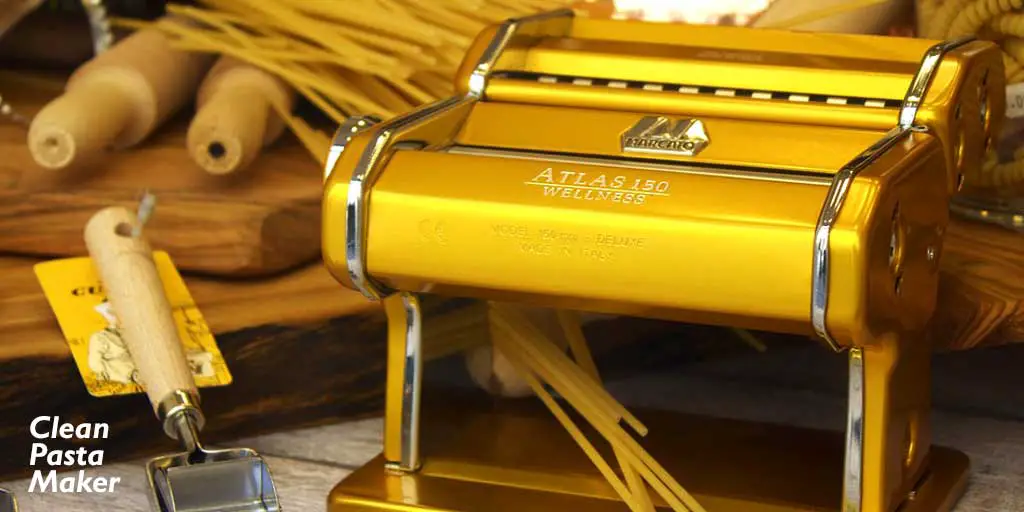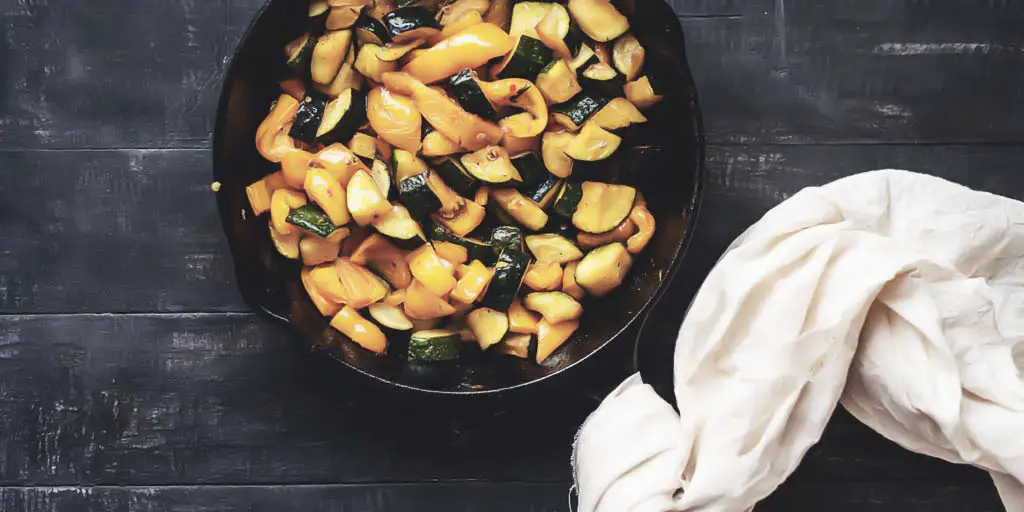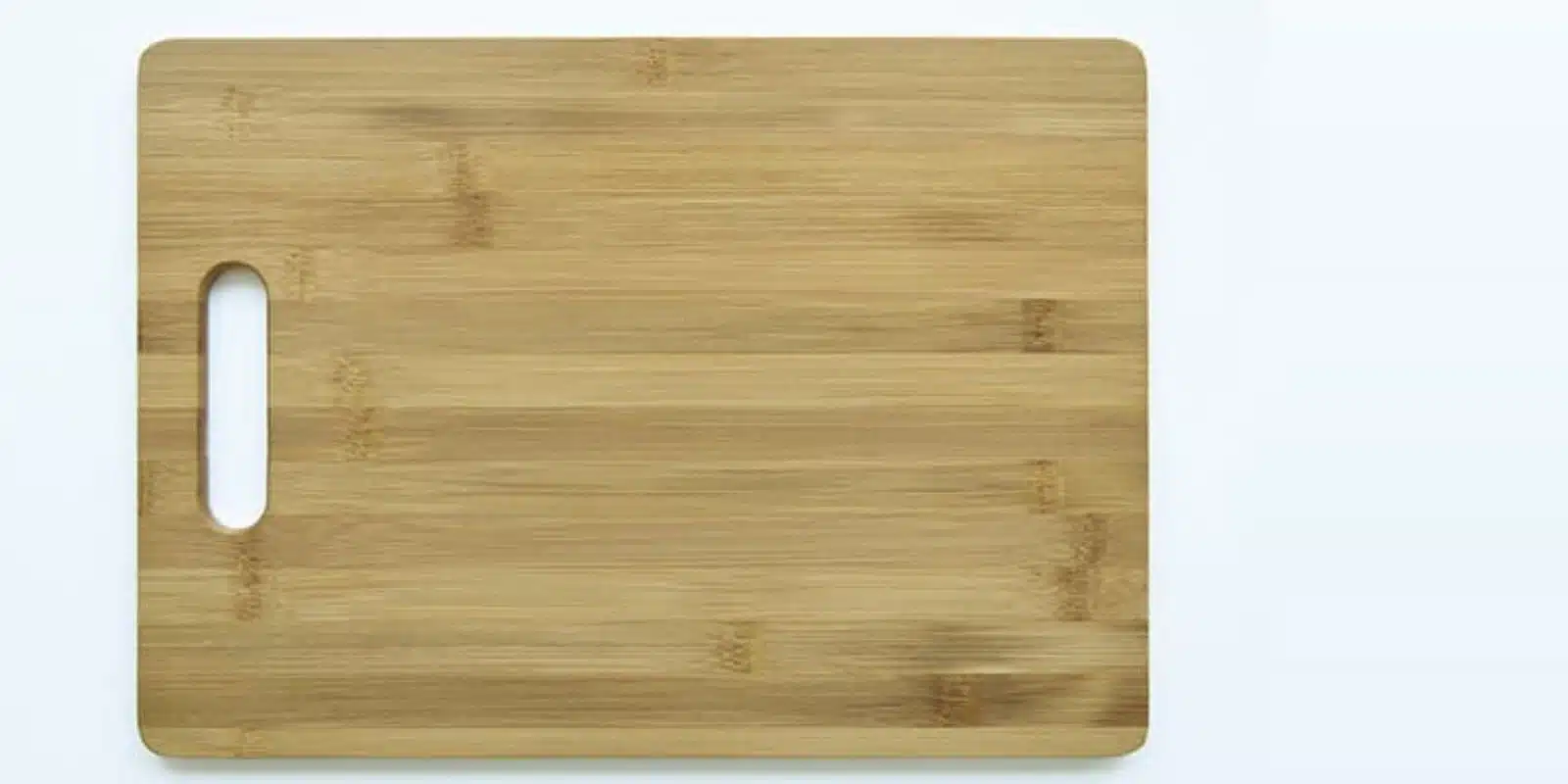Can You Put Non Stick Pans In The Dishwasher?
Nonstick pans are a great invention. The old fashion metal pans are not good for cooking sometimes because they can make food stick to them and it might be hard to clean them afterward. But are you wondering can you put non stick pans in the dishwasher?
Yes, you can, but you need to know that not all types of non stick pans should be cleaned in the dishwasher. Because of the coating, it is important to pay attention when you place non-stick pans in the dishwasher. If you place them without care, they will make your dishes look dirty and it could reduce the quality of your non-stick pans. You should also know that if you don’t properly clean the surface of your pan after each use, food residue may become baked on (and almost impossible to remove).
In this article, we will tell you exactly which type of non-stick pans can be put in the dishwasher and how to properly clean these types of pans.
Contents
What Is A Non Stick Pan?
A non stick pan has a coating on the surface that reduces the surface tension of the food being cooked on it, which prevents food from sticking to the pan’s surface. These types of pans are widely used because they help you cook with less oil and cleaning is easier than with metal pots or pans. The coating can be made out of various materials like Teflon, anodized aluminum, ceramic titanium, silverstone, porcelain-enameled, or cast iron.
Can You Put Non Stick Pans In The Dishwasher?
It is possible to wash non-stick pans in the dishwasher if they are made out of one of the following types: anodized aluminum, ceramic titanium, or porcelain enameled. The coating on these types of pans is more durable and resistant to scratching when exposed to high temperature water. You should know however that scratched pans are harder to clean. So when you place your pan in the dishwasher, make sure it doesn’t hit anything else and take care not to scratch its surface.
Some non-stick pans which are made out of other materials should not be washed in the dishwasher. These types include Teflon, silverstone, or cast iron pans. The main problem with these is that they might lose their coating after being exposed to high temperatures (soapy water) for too long.
Nonstick Pans will last longer if you can wash them by hand; this way you avoid scratching them and the heat won’t affect their durability as much. And you should also avoid using metal utensils when cooking because they can scratch the surface of the pan and damage their coating.
Note: When you use nonstick pan in the dishwasher, make sure the manufacturer recommends dishwashing or handwashing. If they don’t recommend either, don’t use the dishwasher.
However, if you have time and patience, you can wash your non-stick pans by hand. You should use warm water and a mild soap (no harsh chemicals) and avoid using abrasive cleaners or scouring pads.
How to Clean Nonstick Pans in the Dishwasher
When you place a non-stick pan in the dishwasher make sure you don’t put knives or other sharp utensils together with it. This way you avoid scratches on the coating from these metal objects.
You should also make sure that your dishwasher is clean as well, because dirty dishes can cause food residue to become baked onto the surface of the pan which will prove very hard to remove. And although some manufacturers say that their pans are dishwasher safe, they might not be able to resist high heat for too long and thus loose their coating. Follow these steps to clean the pan in the dishwasher:
#Step 1: Place the pan in your dishwasher with high heat, detergent and the hottest water setting.
#Step 2: Run a normal cycle using hot water only with an extra rinse at the end of it to remove all soap residues.
Note: If it is not very dirty, you can run just a regular cycle with no extra rinse.
#Step 3: Remove the pan from your dishwasher as soon as it’s done washing, shake off any excess water and then dry it immediately. An easy way to do this is by drying it with kitchen paper towels. Just remember that don’t use scouring pads that have metal threads since they are more likely to scratch their surface.
If after following these steps there is still food residue on the pan that doesn’t come off, try to soak it in water for a few minutes before using the dishwasher again.
Note: If you don’t clean your nonstick pans regularly, food residue can cause them to rust which will be very difficult to remove. To prevent having to deal with this problem in the future simply follow these steps:
#Step 1: Wash your pan in hot soapy water and dry immediately or soak in soapy water if necessary. Don’t let any excess water stay on the surface of the pan.
#Step 2: Place some grease cutting liquid soap on a sponge and gently use it around the interior surface of the pan where excess food residues might be stuck. Place aluminum foil at the bottom of your sink and place the sponge (with excess soap) on it.
#Step 3: Pour a little bit of vinegar over the sponge and leave it like this for 5-10 minutes or until no more bubbles appear from the cooking residue being removed by the soap.
#Step 4: Run some warm water in your sink to dissolve all grease cutting liquid soap from the surface of your pan before rinsing with clean running water to remove any remaining traces of soap. Then dry as described above or if you have an oven, put your pan inside for a few minutes to make sure it’s completely dry before using again.
Note: If there is rust on your nonstick pans, they need special care which you can learn about here. But always remember that the best way to keep your nonstick pans in good condition is to wash them by hand and dry them immediately after using so they won’t get damaged.
How to Clean Your Nonstick Pans by Hand
Handwashing your nonstick pans are the best way to care for them and if you do it regularly, you can avoid having to deal with rust and scratched surfaces.
Before cleaning your pan by hand, make sure that it is completely cool, or else you will burn yourself when touching its surface. Cleaning a hot pan will only damage the coating on top even further. And be careful not to use any abrasive cleaners or scouring pads that can scratch its surface.
After using your nonstick pan, simply rinse it in warm water using mild soap (no harsh chemicals) or dishwashing liquid without letting any excess water stay on its surface for too long. If there are still stubborn stains after rinsing it, try soaking in soapy water for a few minutes to make them easier to remove.
Then use a sponge with some grease cutting liquid soap and if necessary, pour a little bit of vinegar over the sponge and leave it for 5-10 minutes or until no more bubbles appear from the cooking residue being dissolved by the soap. You can then continue rinsing your pan normally to remove all traces of the soap before you dry it with a dishtowel.
If you follow these steps regularly, you can avoid having to deal with rust and scratched surfaces which are the most common problems when dealing with nonstick pans.
##How Often Should I Clean My Nonstick Pans?
To prolong the life of your nonstick pan, it is best to clean it immediately after use before any food residue starts sticking on its surface. If you leave food on a plate that has been used with a non-stick frying pan, this can cause residues to form which will be harder to remove later on.
If you want an easy way of finding out whether or not your favorite nonstick pans need some cleaning just check their condition by holding them up against light. If your pans show any signs of scratched surfaces or if they look as if they have lost their coating then now is the time to clean them. Otherwise, only clean your nonstick pans when you are sure that they have reached the point of deteriorating.
How to Clean Your Nonstick Cookware With Vinegar
If your non stick pans are looking a bit worse for wear after some time, you can give them a quick scrub with vinegar or lemon juice which will help remove any baked on food residue without damaging the coating on top of the pan.
To clean stuck on deposits from your non-stick cookware, simply pour some vinegar into it and leave it there for around 10 minutes before rinsing thoroughly under running water.
And if the surface is still too difficult to clean with just plain vinegar then use half of water half white distilled vinegar instead or even better is lemon juice because its acidic content acts as an effective natural bleach for removing stains.
Alternatively, you can also use the self-cleaning function of your dishwasher to give them a thorough washing. Just place your nonstick pots and pans into an empty dishwasher without any detergent inside and run it through the complete cycle for getting rid of all food residues.
How to Remove Stains On Nonstick Pans
There are many different types of nonstick coatings which might be affected differently when faced with certain substances like tomato based sauces or wine for instance, so it is better to avoid contact with these acidic foods which can damage your nonstick coating.
When you cannot prevent the stains from forming, there are a few ways which you can use to remove them such as using lemon juice or white vinegar and baking soda with some salt mixed in for extra scrubbing power.
Mix together about 1 tablespoon of each item and then work it into a paste before applying it on one small area at a time and leave it like that for around 10 minutes (or up to half an hour if necessary). After this, rinse your pan thoroughly under running water or wipe gently with a sponge with some soap on it until all signs of the stain have disappeared completely.
If the surface is too difficult to clean with just baking soda, vinegar or lemon juice then use some distilled white vinegar instead along with half of water. And if the cracks in your nonstick pan are really deep and difficult to clean, you might need to soak the pan in hot water for about 10 minutes before using a sponge to just wipe away any surface stains that have formed.
Non-Stick Cookware Safety
It is important that you always follow certain safety guidelines when dealing with nonstick cookware because it is the only way through which you can avoid accidents while cooking. Some of these safety tips include:
Never heat your pans empty because this will cause damage to its surface at high temperatures very quickly so always add either oil or some other type of food product first
Do not pre-heat your nonstick cookware at high temperatures before adding oil because the coating will just start to decompose and smoke heavily
Do not use metal utensils on your nonstick pans as this can damage the surface and peel off some of the coating flakes into your food which you then eat
And lastly, avoid scratching, scraping, or scouring any surfaces made from nonstick cookware as these actions can easily cause irreparable damage.
How to Avoid Dishwasher Cleaning Damages
Dishwasher-safe cookware is simple to clean but nonstick cookware is harder to clean with a dishwasher because it can get damaged easily. So if you’re going to put your nonstick pan in the dishwasher, there are a few things you should know.
- Before placing it in the dishwasher, make sure all excess food is removed from the pan and empty out any water which might be left inside. You can use a sponge or a soft cleaning brush for this purpose.
- If your non stick pan has a lid, place it upside down on a rack above the pan itself. This way they won’t bang into each other during the cycle and that could reduce their durability.
- If you decide to wash your pan with a sponge or a soft cleaning brush, never use metal scouring pads or harsh cleaners because they can damage the surface of your pan.
- Some modern dishwashers have special settings for delicate items like glassware and fine china. You should make sure that your dishwasher has this option before using it on your non stick pan.
Note: If you choose to put a glass lid on top of the nonstick pot during the cycle, make sure it is also placed upside down inside the dishwasher rack so it doesn’t take any direct contact with the heating element of the dishwasher.
Final Words
As you can see, nonstick cookware is very easy to clean and maintain if you know how. If you follow the few rules that we have mentioned in this article then your pans will stay in excellent conditions for years to come.
